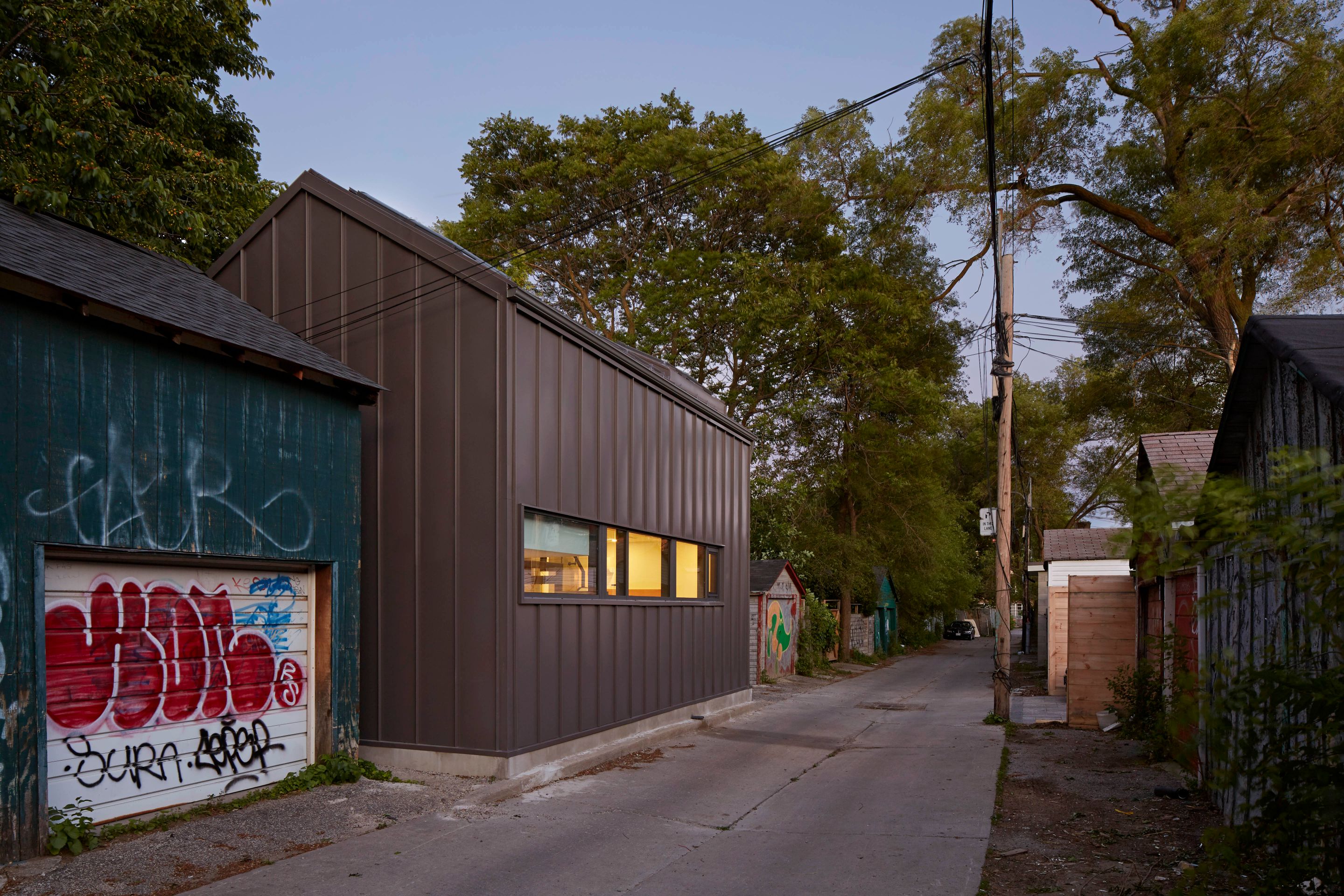
Laneway housing introduces a new kind of typology within well-established neighbourhoods. Photo: LGA Architectural Partners
By the end of this year, 100 detached residential units, each with a footprint of 1,700 square feet or less, will be added to Toronto’s housing stock. That may sound like a minor accomplishment considering the city’s ongoing affordable housing crisis. In reality, it’s a notable benchmark for the long-awaited rise of laneway housing.
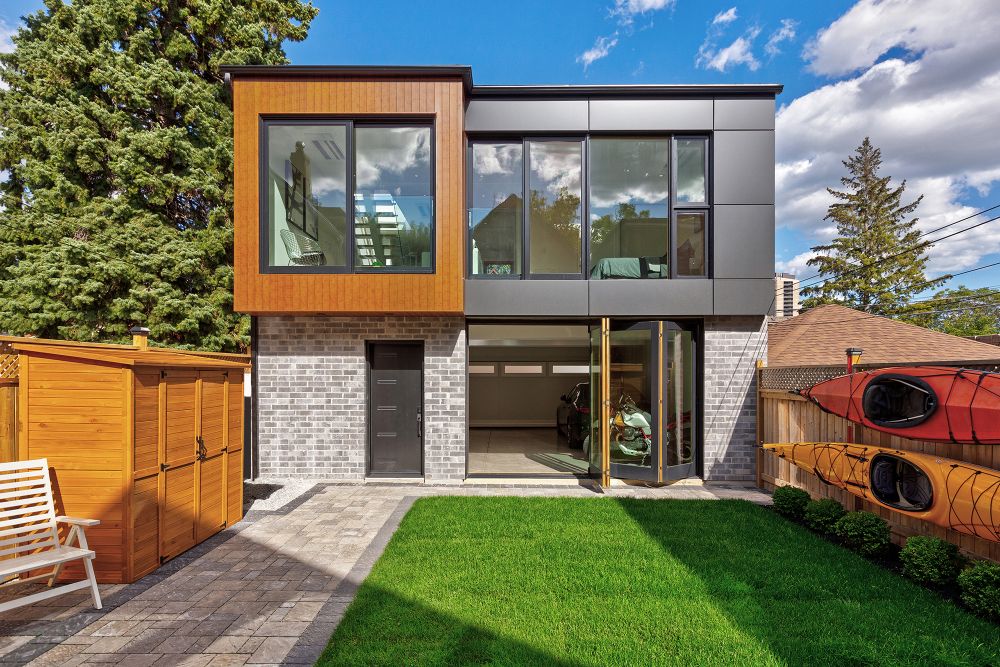
Not all laneway houses are micro-size. This two-bedroom suite in Toronto’s east end is 1,450 square feet. Photo: Lanescape
The idea of detached living spaces replacing backyard garages has been around for decades, and for good reasons. Not only do they help densify established neighbourhoods without changing street grids, but they can also provide homeowners with a supplementary rental income, or a separate suite for ageing parents, or an alternative option for those wanting to live in a residential community rather than a high-rise. They can also be used for other purposes, like home-offices, yoga studios, art galleries …. the list goes on.
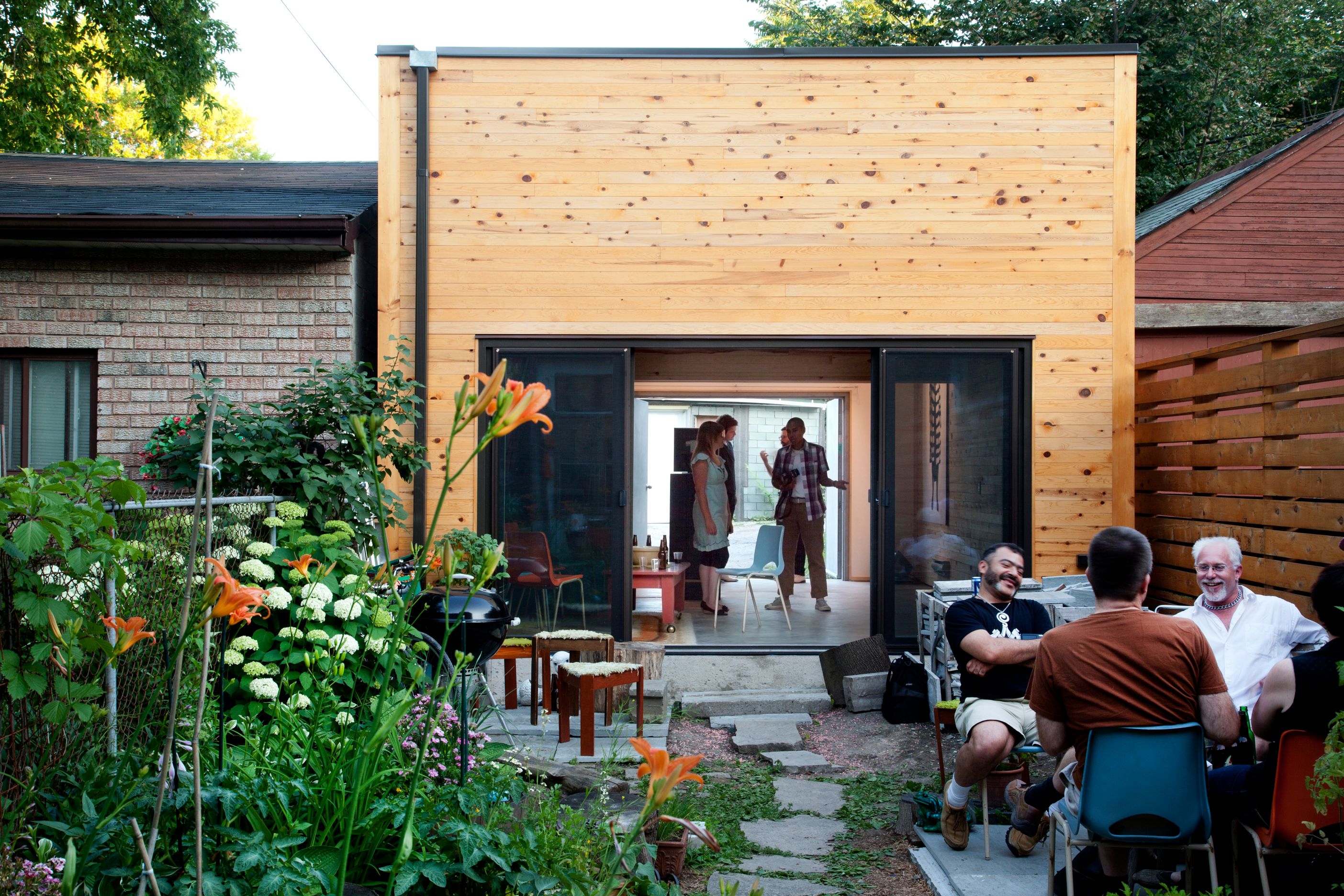
With fewer people driving cars, it is easy to image old garages being replaced with flexible spaces like this art gallery. Photo: LGA
In 2018, after years of advocacy by some visionary architects and urban planners, the city simplified bylaws to enable homeowners to more easily build second homes if their backyard adjoins one of the city’s 2,400 laneways. The zoning changes have spurred bespoke firms catering specifically to this new urban typology. According to co-founder Craig Race of Lanescape, a design-build practice devoted to laneway housing since before the bylaws changed, “We’ve only seen the beginning of what this could look like.” In Vancouver, where lenient regulations were adopted 15 years ago, up to 500 laneway houses are being added to the grid each year.
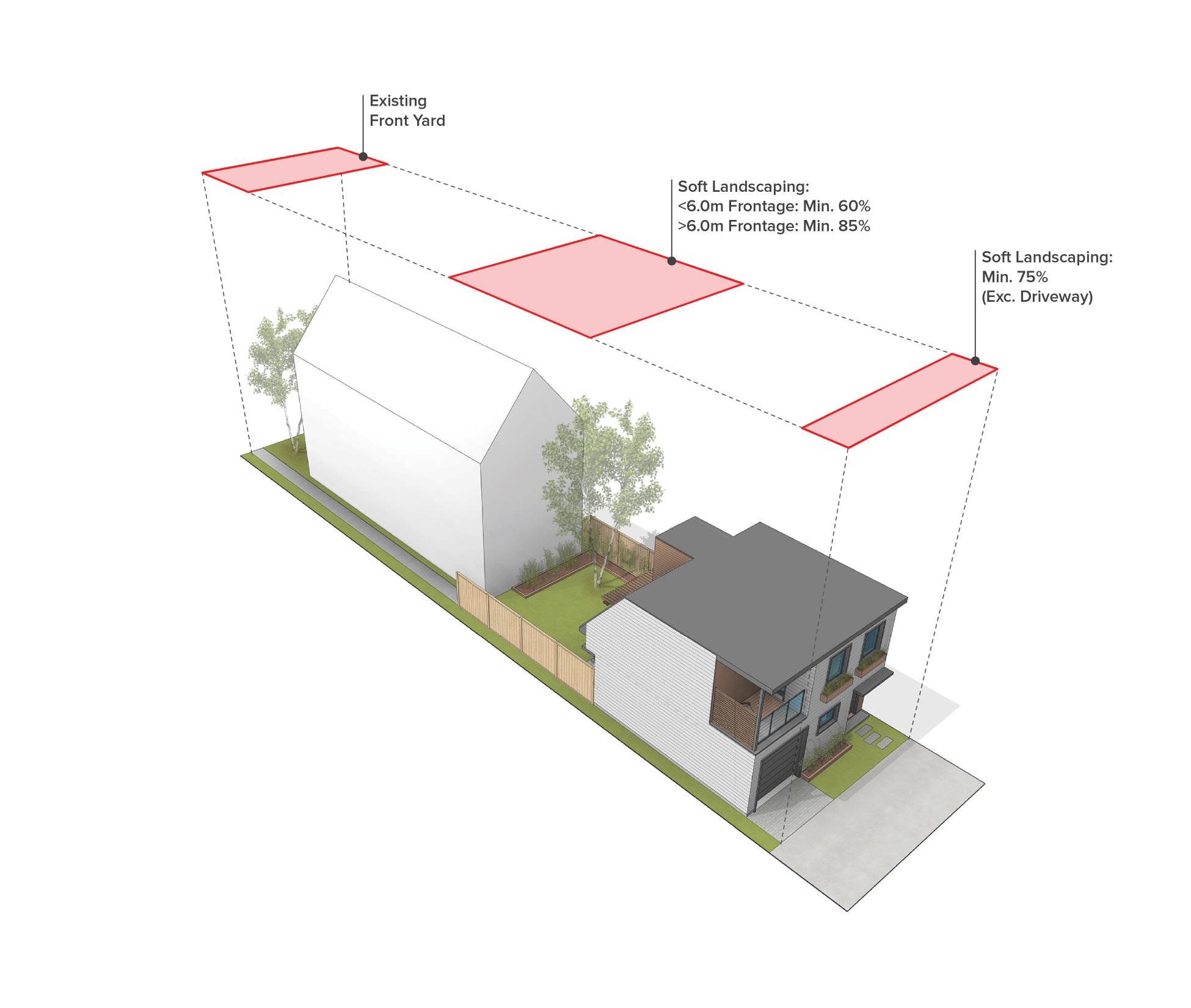
Most secondary suites share the backyard and are accessed via the laneway. Rendering: Lanescape
A typical dwelling is around 800 square feet, and its envelope rather boxy due to several factors. For instance, the maximum height is capped at six metres (or two storeys), and on smaller lots, a 45-degree angular plane on half of an otherwise flat roof is required to ensure adequate daylight. There are also logistical sticking points regarding emergency and fire access that can affect shape and dimensions, even determine if a house can be built. In other words, not every laneway property qualifies, but an estimated 30,000 lots do, and that’s a substantial influx of privately-owned detached homes in a city where condo towers have dominated for decades.
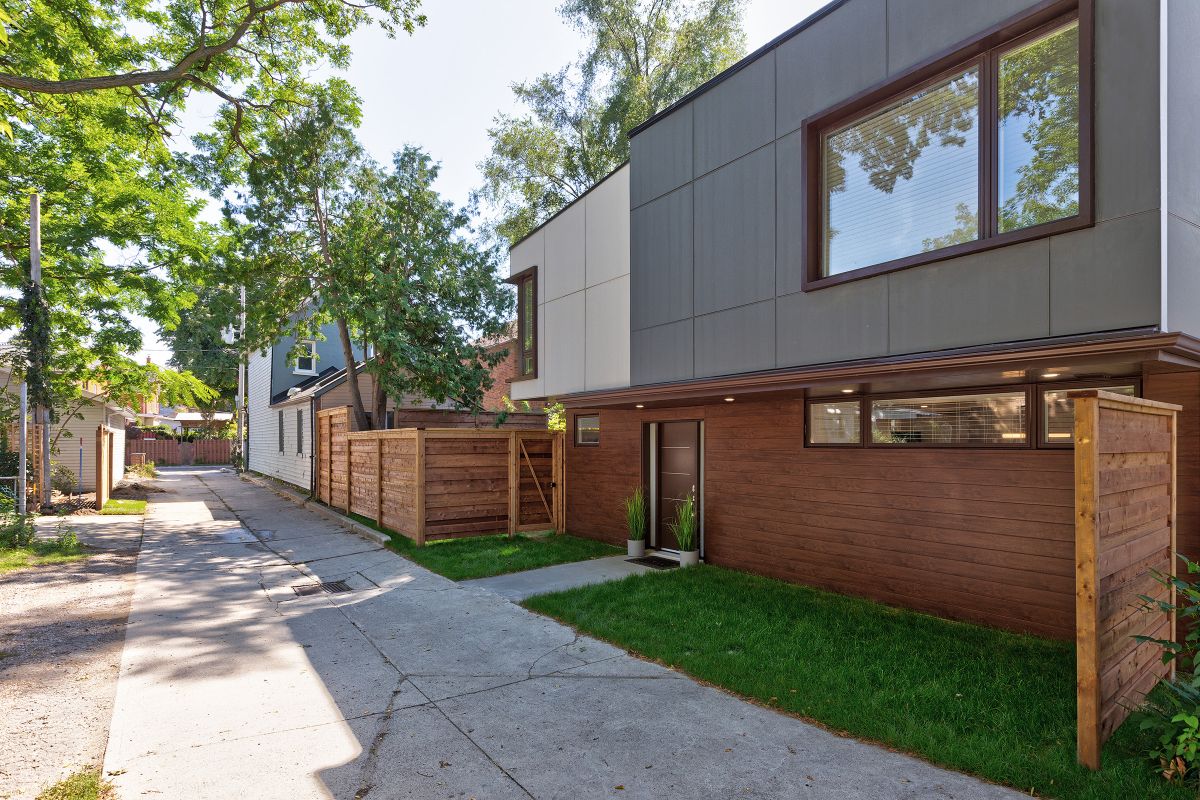
No two houses are exactly alike, which is part of their charm. Photo: Lanescape
They are also remarkable in their character. According to Race, while restrictions govern the envelope, it is easy and fun to get creative inside. He compares some of the space-saving strategies to that of a boat, where every opportunity to build in storage is worked into the plan, including stairs doubling as pull-out drawers and rooms that are multi-purpose.
In 2018, LGA Architects completed a 1,100-square-foot, split-level laneway house with the open kitchen located below grade by a few feet and the dining area three steps up to ground level. The staggered levels visually carve out separate rooms without adding walls, thereby providing the otherwise compact home with a greater sense of space and airiness.
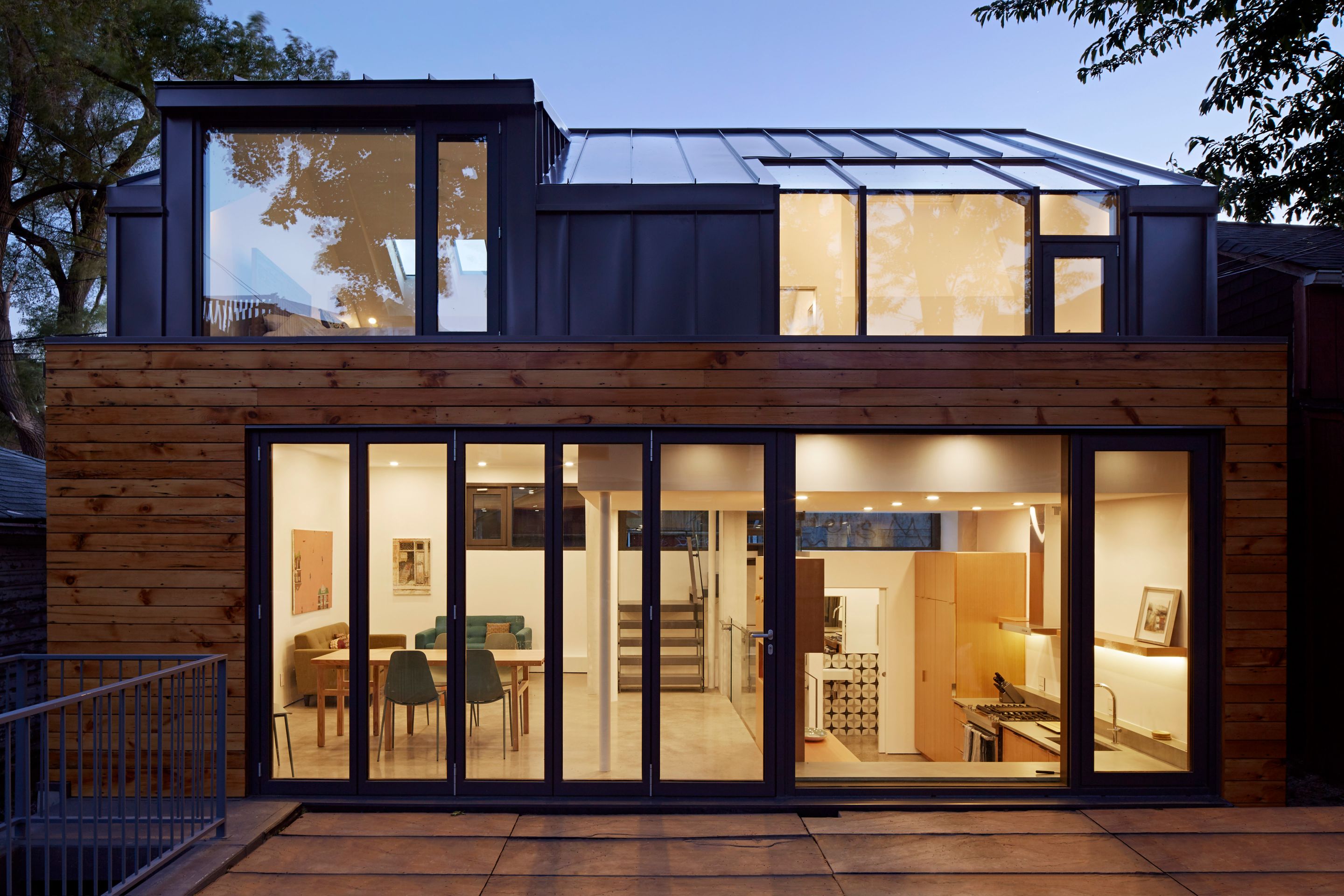
Optimizing natural light and glazing creates a greater sense of connection to the outdoors. Photo: LGA
“One of the nicest features of a laneway, says LGA principal Dean Goodwin, “is the ground floor is at grade so you can make beautiful connections between the interior and exterior. The shared backyard creates a courtyard experience. It literally extends the houses to the outdoors.”
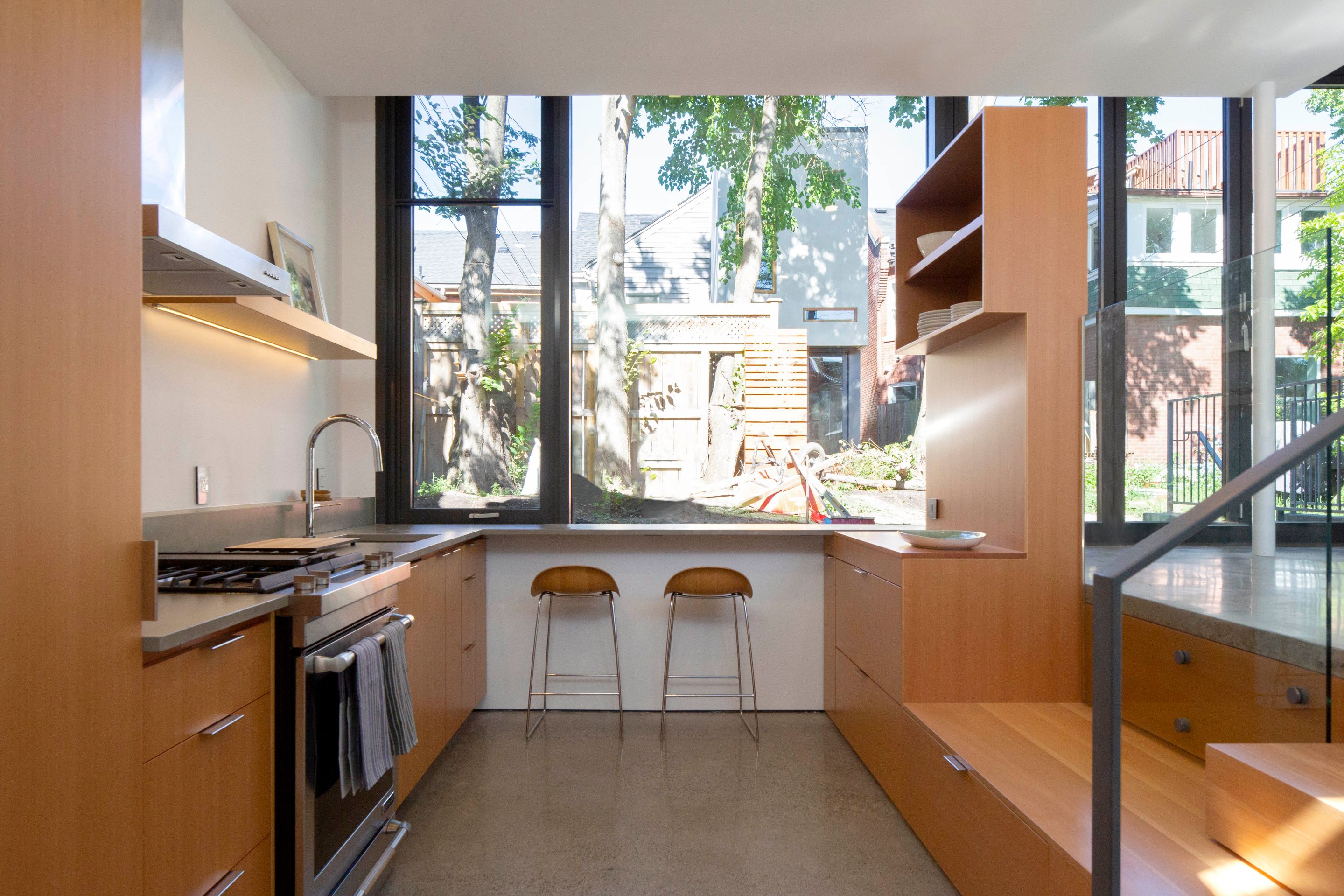
Split level layouts add spatial divides between rooms but by without walls. Photo: LGA
For Race, there are very few limits to what can be built. “We can do some pretty wild things that fit within the bylaws,” he says, including accommodating 10-foot ceilings or customizing interiors that respond to accessibility needs. “It’s become a competitive market since I started my studio in 2015,” he says, “and I think that speaks to how accessible the guidelines have become.” It also speaks to the desire and need for new models for low-density building that middle-income earners can afford.
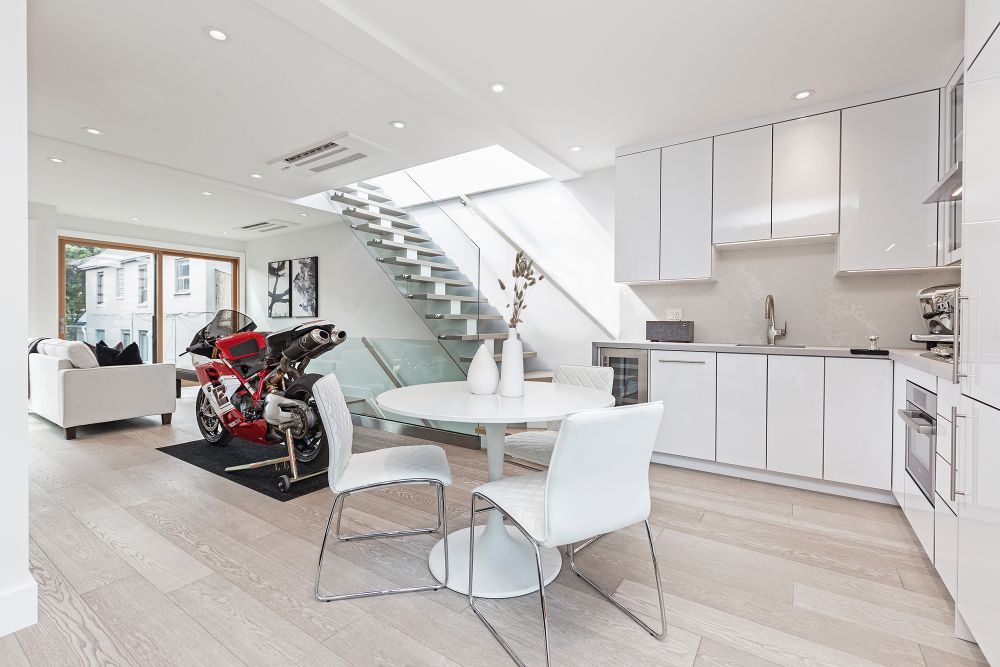
The ground level of this suite has space for a kitchen, a living room and a motorcycle. Photo: Lanescape
Written by Catherine Osborne